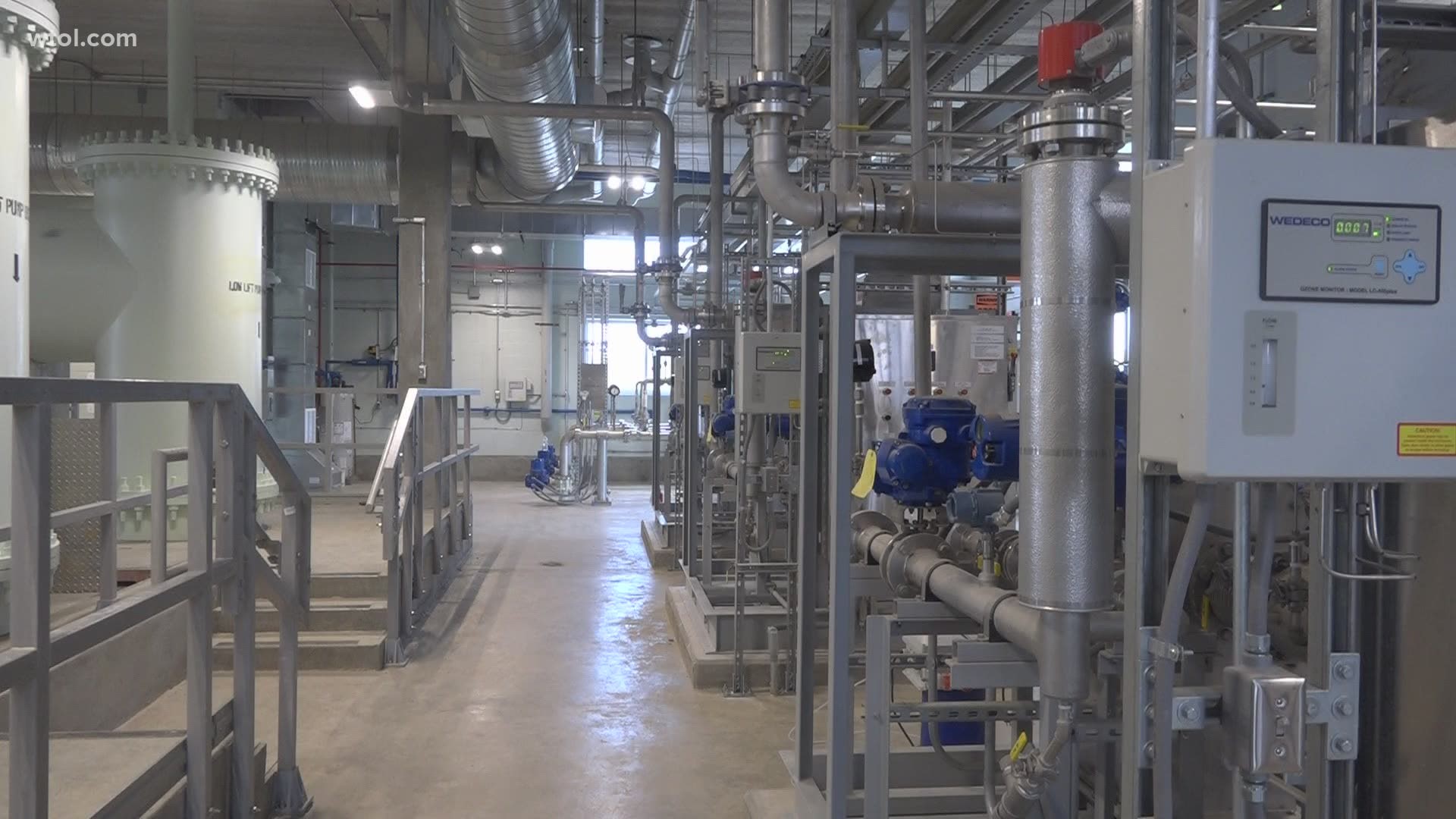TOLEDO, Ohio — The city of Toledo's Collins Park Water Treatment Plant is now treating settled water with ozone.
The new treatment technique began June 24. The ozone facilities have a daily capacity of 160 million gallons.
Ozone provides additional measures of protection for the pretreatment and mitigation of the effects of harmful algal blooms in Lake Erie.
“Ozone treatment at the Collins Park Water Treatment Plant is another critically important step we have taken toward making it the most efficient and modernized water treatment plant in the nation," Mayor Wade Kapszukiewicz said. "It is the most advanced technology available to continue our fight against toxic algal blooms.
“Algae blooms are a recurring scourge in Lake Erie and Toledo has adapted to deal with this issue. While we are successfully treating this problem on our end, it is no secret that the root cause of the problem is pollution from farms and other sources that run off into waterways, forming harmful algal blooms in our source water. Cities like Toledo have dramatically slashed the release of algae-feeding phosphorus into waterways, but we need farmers to do the same.”
The work includes upgrades to potassium permanganate and powder activated carbon feed systems at the city's low service pump station, and filter upgrades at Collins Park.
"It's a very, very aggressive oxidizer," said Andy McClure, Collins Park Water Plant Administrator. "We need it in this area due to Lake Erie. It's shallow and we get occasional runoff into the lake. We do have occasionally have harmful algal blooms."
An additional section of the treatment plant is now dedicated to ozone treatment. Construction has been ongoing for several years, totaling about $104 million for the two basins currently operating.
Ozonation gives treatment to certain things people might not have noticed in their water before.
"We've just never been able to remove them, and you get used to those things in the water, so it may taste a little different and you may notice something that's not there," McClure said.
Officials want everyone to know this new treatment process is not dangerous for drinking water, but the process requires additional safety precautions for workers. But officials say it's worth the risk, knowing in theory we will likely never have another no-drink advisory.
Come March of 2023, more improvements will be made to the plant to continue on with this process.

